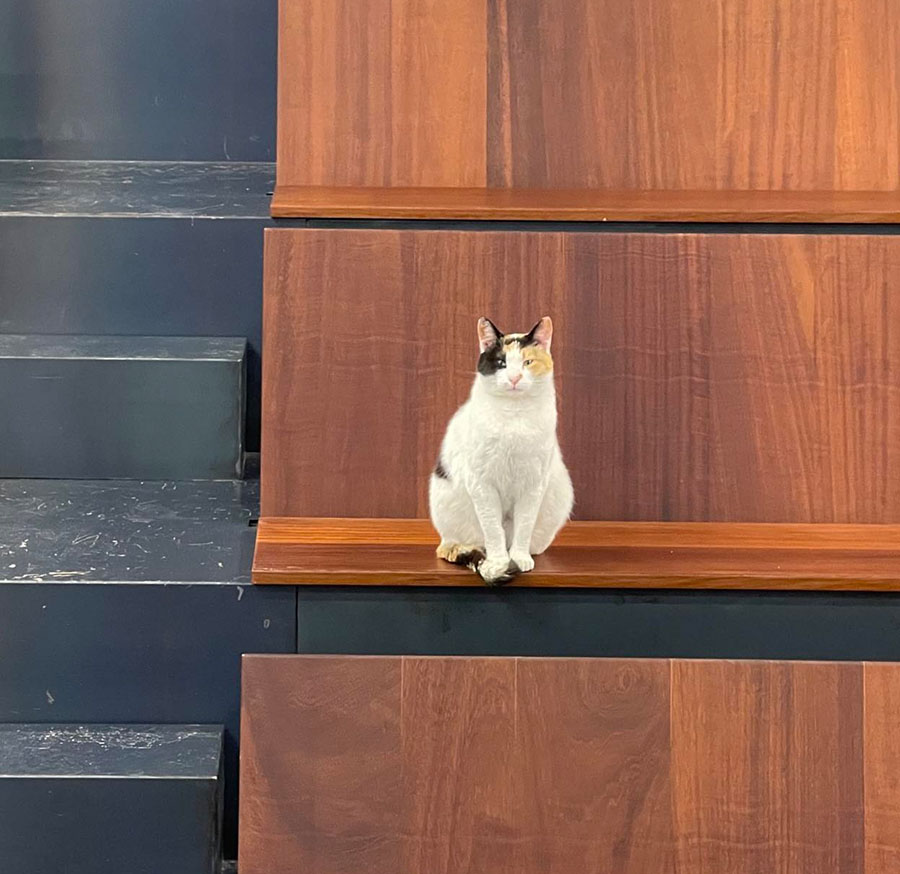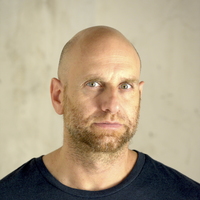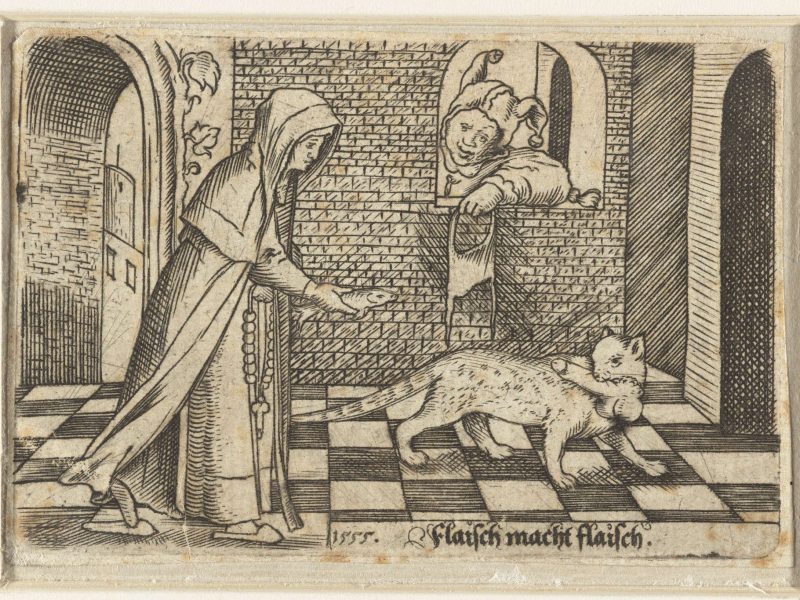Art in Context , Artistic Practices, Research Methodology and Theories of Contemporary Art

Art in Context
(Artistic Practices, Research Methodology and Theories of Contemporary Art)
Disclosures, dissimulations, healings: Exploring the comical in contemporary
art
ASFA Fall /Spring Semester 2023-24
From our own personal experience, we know that every attempt at interpreting the comic element and the physical reaction of laughter eludes any formalized and rigid definitions. However, taking as our starting point the theme of comedy in modern life, we will search for methodologies that might prove useful to our artistic practice, because of this very resistance to positive conclusions. Emphasizing the origin of slapstick from batacchio (a device composed of two thin wooden boards that produce the sound of slap in Commedia dell’arte, when one comedian slaps the other), we will exploit its related versions in the history of modern art and in visual arts such as theater and puppets, demonstrations of virtuosity and clumsiness, the art of circus and cinema.
Drawing from classic and contemporary literature on the paradoxes and the self- evidence of the comic experience, we will touch upon the field of epistemological intersections with psychoanalysis (Sigmund Freud, Jacques Lacan, Sarah Kofman, Julia Kristeva), philosophy and ethics (Vladimir Jankélévitch, Henri Bergson, Schopenhauer, Nietzsche, Martin Heidegger, John Gray), the theory of literature (Aristotle, Heinrich von Kleist, Gianni Rodari, Umberto Eco, Robert F Storey, Maria Oikonomou, Jean Starobinski, Dimitris Polichronakis, Simon Critchley), feminist studies (Hélène Cixous, Luce Irigaray), film studies (Lotte Eisner, Laura Mulvey, Gilles Deleuze, John Berger, Malcolm Turvey), art theory (Jean-Yves Jouannais, Christine Buci Glucksmann, Giorgos Tzirtzilakis, Steven Connor, Jean Clair, Rosalind Krauss) and poetry (Friedrich Hölderlin, Rainer Maria Rilke, Ezra Pound, Jules Laforgue, Dionysios Solomos, Charles Baudelaire, Amy Lowell, Sylvia Plath, Romos Filiras, Giorgos Seferis). We will try to analyse the comic element in areas where it is usually absent, such as Marxist studies and critical theory (T. W. Adorno, Siegfried Kracauer, Walter Benjamin, Roland Barthes, Κarel Kosik, Jean Baudrillard), aesthetics and politics (Leon Trotsky, Jacques Rancière, Chantal Mouffe, Bruno Latour, Giorgio Agamben), as well as Christian literature (Ignacio de Loyola, Francis of Assisi, Simone Weil).
Through the subterranean allusiveness of the comic and irony, we will bring to light the ways in which dominant narratives are transformed into vehicles of parody, touching even the most improbable and humorless avant-gardes (constructivism, suprematism, art informel, abstract expressionism), in addition to those movements that explicitly appropriated the comic and the absurd in their gestures (Les Arts incohérents, Dada, Fluxus). Even the most discrete and “serious” references in the meta-language of the avant-garde in contemporary production involve a comic disposition that usually has to do with the frustration of avant-gardist expectations.
Thus, if the comic smolders in every ambitious fraction of modernity, our research aims at activating the “deficiencies” of technology in post-Fordist production: from the slapstick corporeality of post-war sculpture, the latent functionality of DIY works, the ambitious invention or the failure of emergency solutions in design, to the deliberate relinquishment of the cognitive process in handicraft (objets trouvés, ready-mades) and the equally deliberate transition from skillfulness to deskilling.
In the heyday of the Taylorist organization of labour, and against the suggestions of a disciplined and controlled environment, the foundation of this parallel comic avant- garde is inspired by clumsiness, blunder, the sense of incompetence, as well as awkwardness against rationalist modernity.
Among other blunders, misfortunes, and glitches, we will examine asymmetry in rationalist movements such as Bauhaus, Barnett Newman’s contemptuous description of the experience of stumbling on sculptures, the prank behind Kazimierz Malewicz’s Black Square, the Surrealists’ obsession with Mack Sennett’s comedies, and the contemporary return of sculpture to the archaic clumsiness of the xoanon.
This sign of “failure” in avant-gardism, which did not remain insusceptible to the spirit and the anxieties of the time, would regenerate and enrich older and new antiheroes, caricatures of buffoons, numerous kinds of Pierrot le Fou, as well as paranoid bourgeois such as Ubu Roi, among other neurotic and psychotic metropolitan denizens (Evil Clowns, Jokers). These descriptions of personality disorder turn the comic into a reversed tragedy, where it is the artists that identify themselves with the outcast and sorrowful clowns, who, lost in their personal dead-ends, live somewhere between the dream-world and reality.
The content of the students’ artistic production will be the main part of the research process. In addition to their practice, students are expected to deliver one detailed (up to 500 words) and one short (up to 150 words) artistic note, in the first and the second semester respectively.
The course retains its ambiguity as both theoretical and experimental, and it is structured as follows:
- Lectures
- 25-minute-long presentations of the students’ work
- 30 minute-long tutorials in every class
Due to the peculiarity of the course, no exams are to take place in June and September. To complete the course, students are expected to attend every lecture.

KOSTIS VELONIS / Associate Professor
Kostis Velonis lives and works in Athens. He holds an MRes in Humanities and Cultural Studies from London Consortium (Birkbeck College, ICA, AA, Tate). He studied Arts Plastiques/ Esthétiques at Université Paris 8 (D.E.A). He earned his PhD from the Department of Architecture, N.T.U.A University of Athens. Currently Velonis is Associate Professor at Athens School of Fine Arts. Velonis has participated in exhibitions and residencies Internationally.
Kostis Velonis’ sculptures explore the comic and awkward condition of the object as subject, implying allegoric, everyday narratives and mythological plots. Throughout his work, the emphasis is placed on the moral implications of failure and clumsiness caused by daydreaming and the reality that frustrates it. The context of this reading is articulated through a systematic vocabulary of forms and materials that refer to modernity via architectural typologies such as ancient Greek theatre structures (stage, stands, orchestra), the politics of the podium, avant-garde propaganda booths and the subpolitics of domesticity.
Email: kvelonis@asfa.gr
Student Works


